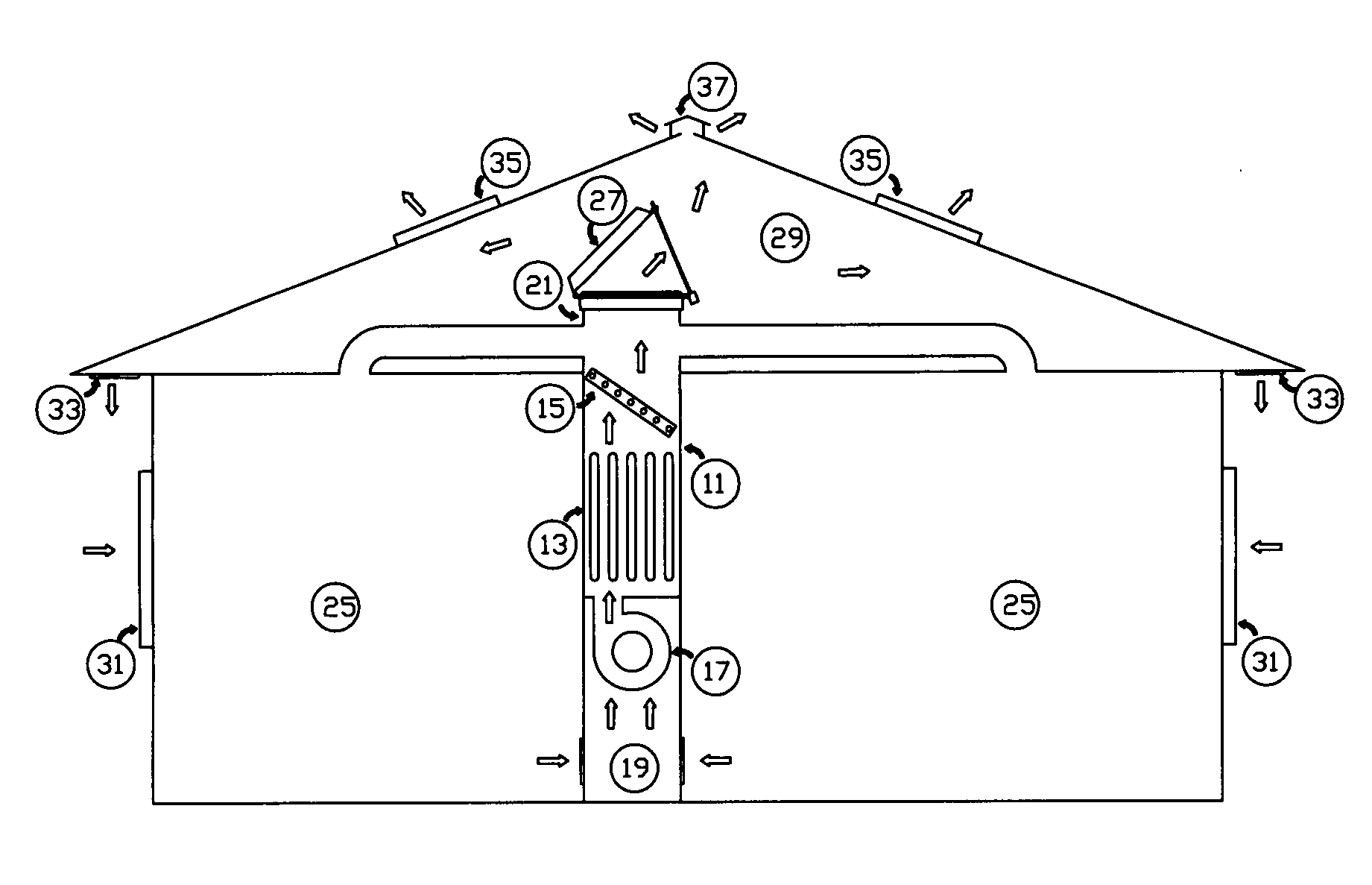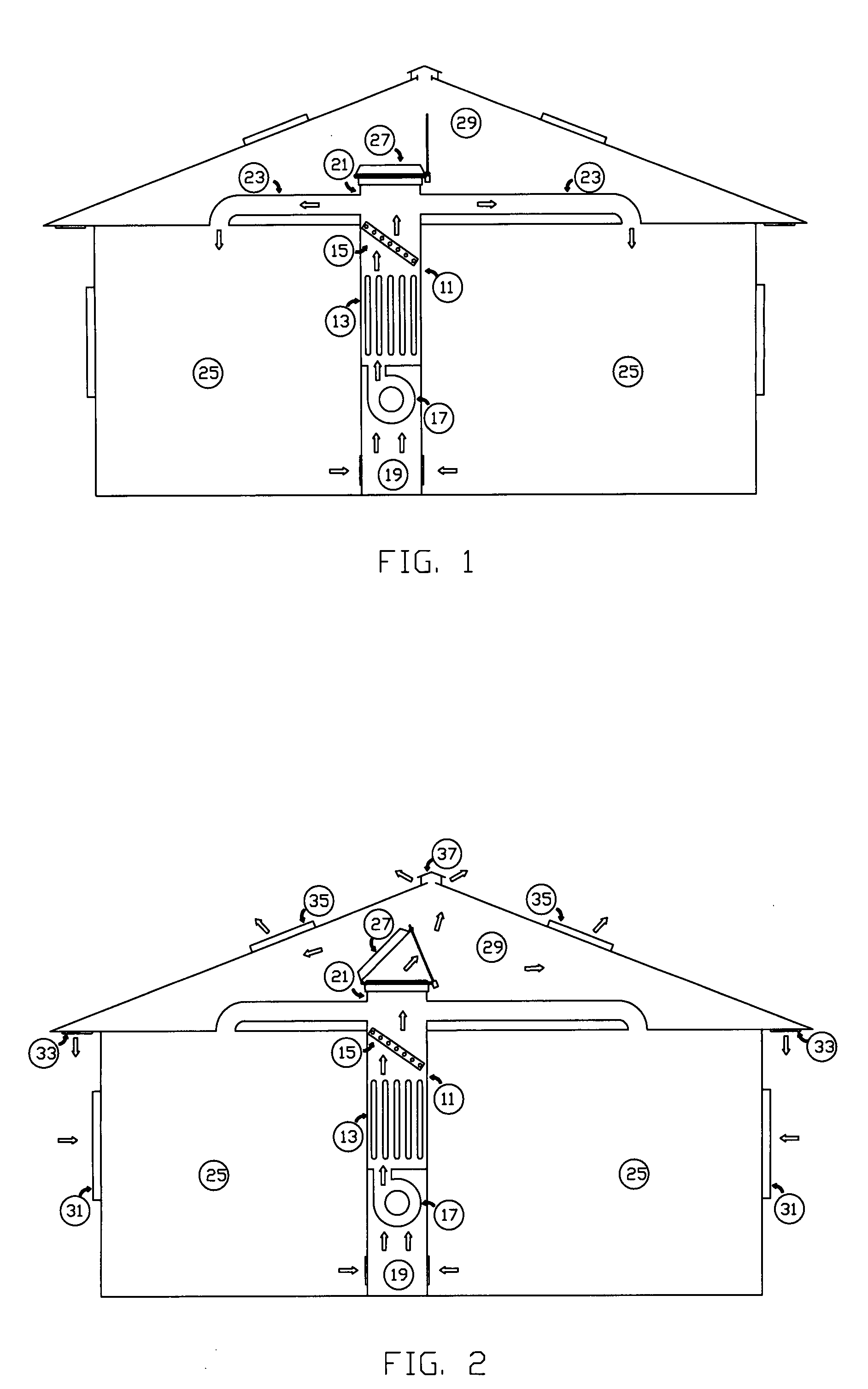Closed air handling system with integrated damper for whole-building ventilation
a whole-building ventilation and air handling technology, applied in ventilation systems, heating types, domestic cooling devices, etc., can solve the problems of many structures not being designed, attic fans may not be aesthetically pleasing to builders, owners, etc., and achieve the effect of facilitating the entry of fresh air into the dwelling
- Summary
- Abstract
- Description
- Claims
- Application Information
AI Technical Summary
Benefits of technology
Problems solved by technology
Method used
Image
Examples
Embodiment Construction
[0031] Referring to FIGS. 1 through 8 of the drawings, a central heating and / or air conditioning system for a dwelling is disclosed that additionally provides a ventilation mode. The modified central heating and / or air conditioning system has a central air handler 11 which is positioned within a building and includes a heat exchanger 13 and / or evaporator cooling coils 15 and blower 17 for transferring air from a return air duct / vent 19 through heat exchanger 13 and / or evaporator cooling coils 15 and into the discharge plenum 21. Discharge plenum 21 then delivers the air through a plurality of ducts 23 to vent the air into different areas of a dwelling. As shown by the arrows, the air normally passes directly from the interior air space 25 through the return air duct / vent 19 into the central air handler 11. The system in accordance with the present invention adds an integrated damper 27 to discharge plenum 21 for air discharge into an attic space 29 or crawl space 39.
[0032] As seen ...
PUM
 Login to View More
Login to View More Abstract
Description
Claims
Application Information
 Login to View More
Login to View More - R&D
- Intellectual Property
- Life Sciences
- Materials
- Tech Scout
- Unparalleled Data Quality
- Higher Quality Content
- 60% Fewer Hallucinations
Browse by: Latest US Patents, China's latest patents, Technical Efficacy Thesaurus, Application Domain, Technology Topic, Popular Technical Reports.
© 2025 PatSnap. All rights reserved.Legal|Privacy policy|Modern Slavery Act Transparency Statement|Sitemap|About US| Contact US: help@patsnap.com



